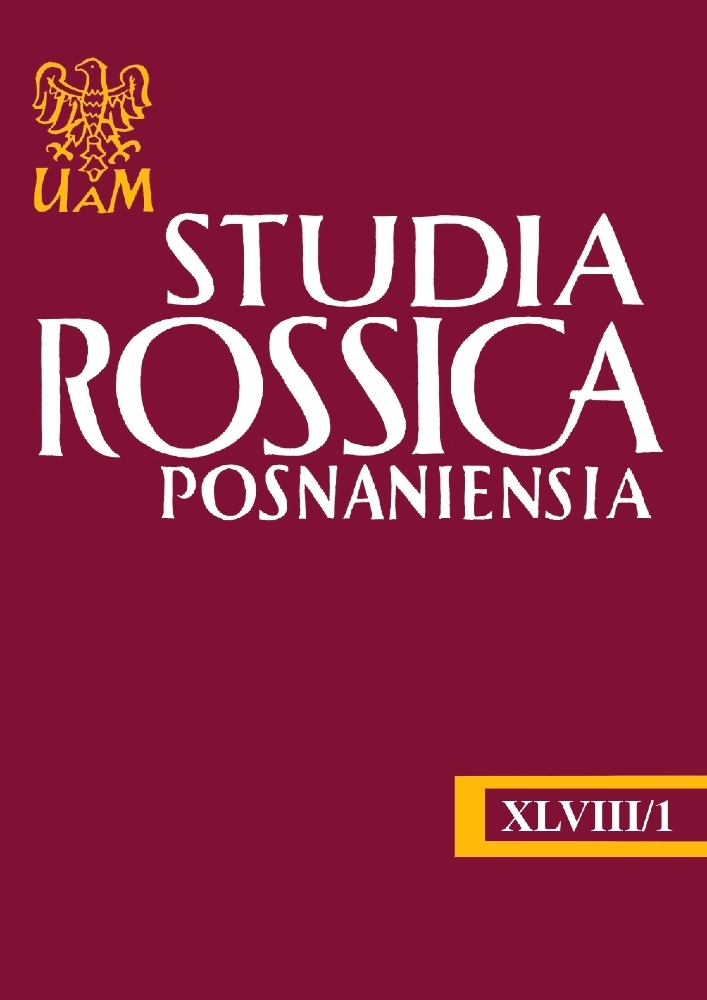Abstrakt
The aim of the article is to examine whether the jargon units connected with ballet should be included in the network of terms found in modern dictionaries. The starting point of the analysis was the theoretical discourse concerning the range of meanings that the term “jargon” possesses. The article also gives an overview of the names and works of the authors who analysed the theatrical and ballet jargon. Then, using specific examples, the author confirms that the jargon units occur in the texts of culture, which implies that lay men can also come across such vocabulary. Texts of culture, for example, the analysed film Bolshoy, can be translated. The translation of jargon vocabulary requires the translator to have special competences and profound knowledge of the given field. The occurrence of jargon units in freely accessible texts of culture and functioning of these texts in their translated form constitute an argument that jargon words and expressions should be recorded in dictionaries. Recording them in specialist bilingual dictionaries, which usually contain such terms, would be desirable. The addition of jargon lexis which would be provided with appropriate qualifiers to their wordlist would increase the functionality of the dictionaries. This would improve the bilingual communication in the given field and streamline the work of translators.
Bibliografia
Aleksandrova, Natalʹâ. Balet. Tanec. Horeografiâ. Kratkij slovarʹ tancevalʹnyh terminov i ponâtij. Sankt-Peterburg–Moskva–Krasnodar, Planeta muzyki, 2011.
Alekseeva, Irina. Vvedenie v perevodovedenie. Sankt-Peterburg, Filologičeskij fakulʹtet Sankt--Peterburgskogo gosudarstvennogo universiteta – Moskva, Izdatelʹskij centr „Akademiâ”, 2004.
Âkovickaâ, Vanda. „Iz istorii nekotoryh baletnyh terminov v russkom âzyke (arabesque, attitude, cabriole, entrechat)”. Studia Rossica Posnaniensia, 7, 1975, s. 173–190.
Capalina, Olʹga. „Tematičeskie gruppy sovremennogo žargona dramatičeskogo teatra”. Vestnik Moskovskogo gosudarstvennogo oblastnogo universiteta. Seriâ: Russkaâ filologiâ, 3, 2017, s. 32–40.
Capalina, Olʹga. „Tematičeskie gruppy žargona baletnogo teatra”. Russkij âzyk v slavânskoj mežkulʹturnoj kommunikacii. Red. Olʹga Šatalova. Moskva, Moskovskij gosudarstvennyj oblastnoj universitet, 2018, s. 357–360.
Červinskij, Pëtr. „Žargony i sleng v aspekte oformleniâ leksičeskogo značeniâ slova”. Leksika podstandarta. T. 2: Sovremennye žargony i ih opisanie. Red. Anna Zyh, Margarita Nadelʹ-Červinʹska. Katowice, Wydawnictwo Uniwersytetu Śląskiego, 2009, s. 21–46.
Emelʹânenkov, Vitalij. „Baletnaâ terminologiâ v slavânskih âzykah”. Rusistica Latviensis, 8, 2019, s. 168–179. Web. 27.02.2023. https://www.apgads.lu.lv/fileadmin/user_upload/lu_portal/apgads/PDF/Rusistica_ Latviensis/18_Rusistics-8_2019_V_Jemeljanenkovs_01.pdf. DOI: https://doi.org/10.22364/ruslat.glp.18
Jakowicka, Wanda. Baletnaâ leksika v russkom i polʹskom âzykah. Poznań, Wydawnictwo Naukowe Uniwersytetu im. Adama Mickiewicza, 1981.
Kaûmova, Diana, Marʹâm Bakirova. „Priemy perevoda žargona (slenga) v proizvedeniâh angloâzyčnyh avtorov”. Karelʹskij naučnyj žurnal, 2, 2014, s. 15–17.
Kuzʹmina, Anna. Teatralʹnyj sleng. Slovarʹ teatralʹnogo slenga. Sozdano v intellektualʹnoj izdatelʹskoj sisteme Ridero. 2017. Web. 27.02.2023. https://www.libfox.ru/678690-anna-kuzmina-teatralnyy-sleng-slovar-teatralnogo-slenga.html.
Lingvističeskij ènciklopedičeskij slovarʹ. Web. 27.02.2023. https://rus-lingvist-dict.slovaronline.com/.
Maksimov, Vladimir, Anna Golubeva, red. Russkij âzyk i kulʹtura reči: Učebnik. Moskva, Gardariki, 2001.
Nemčenko, Vasilij. Vvedenie v âzykoznanie. Moskva, Drofa, 2008.
Nikolina, Nataliâ. „Leksika i frazeologii akterskogo žargona”. Âzyk v dviženii: K 70-letiû L.P. Krysina. Otv. Red. Elena Zemskaâ, Mariâ Kalenčuk. Moskva, Izdatelʹskij dom „ÂSK”, 2007, s. 471–478. DOI: https://doi.org/10.1016/j.mimet.2007.06.003
Nikulʹceva, Viktoriâ. „Ob osobennostâh professionalʹnoj reči artistov baleta XXI veka”. Studia Rossica Gedanensia, 3, 2016, s. 33–44.
Novickaâ, Olʹga. „Nenormativnaâ leksika kak èlement rečevoj harakteristiki personaža: dialektizmy, vulʹgarizmy, žargonizmy v hudožestvennom perevode”. Vestnik Moskovskogo gosudarstvennogo lingvističeskogo universiteta. Gumanitarnye nauki, 10 (783), 2017, s. 203–214.
Staruhina, Anastasiâ. „Osobennosti perevoda slengovoj leksyki”. Lingvistika i mežkulʹturnaâ kommunikaciâ, 9, 2013, s. 116–119.
Szczerbowski, Tadeusz. Polskie i rosyjskie słownictwo slangowe. Kraków, Wydawnictwo Naukowe Uniwersytetu Pedagogicznego, 2018.
Vinogradov, Venedikt. Vvedenie v perevodovedenie (obŝie i leksičeskie voprosy). Moskva, Izdatelʹstvo instituta obŝego srednego obrazovaniâ RAO, 2001.
Waganowa, Agrypina. Zasady tańca klasycznego. Przeł. Olga Sławska. Kraków, Państwowe Wydawnictwo Muzyczne, 1965.
Licencja
Prawa autorskie (c) 2023 Ewelina Parafińska-Korybska

Utwór dostępny jest na licencji Creative Commons Uznanie autorstwa – Użycie niekomercyjne – Na tych samych warunkach 4.0 Międzynarodowe.

